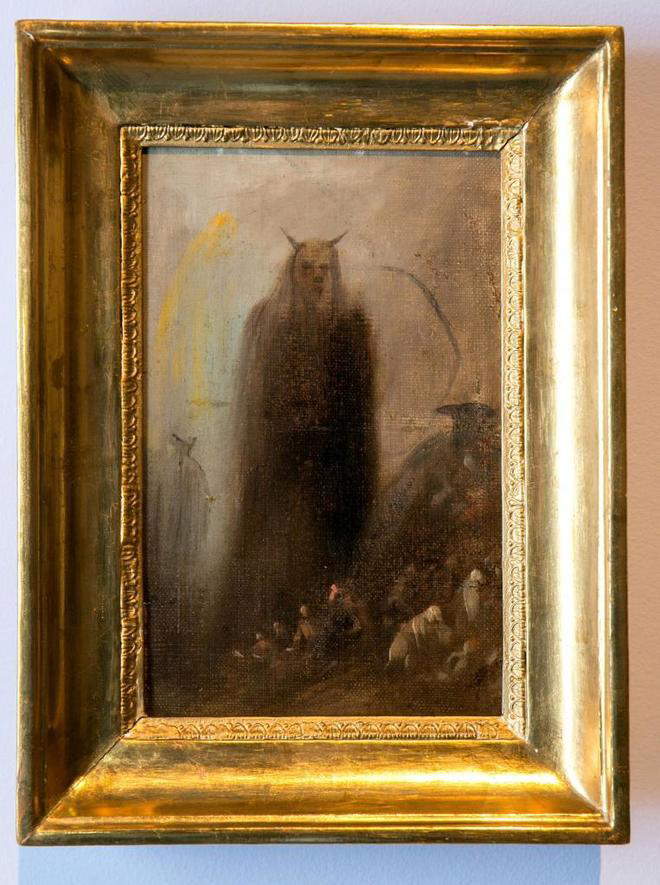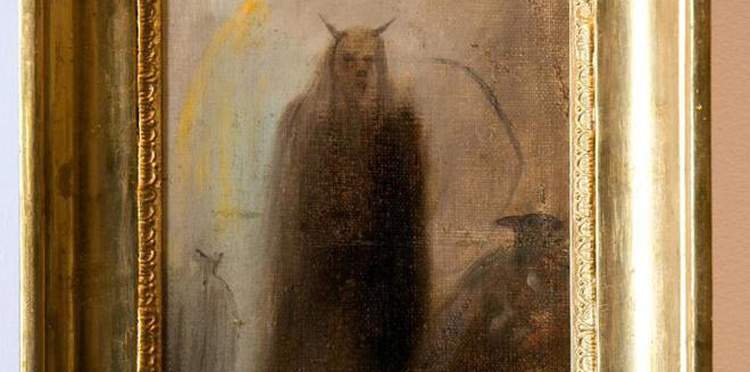A painting by Francisco Goya y Lucientes (Fuendetodos, 1746 - Bordeaux, 1828) that had been lost track of for ninety years has reappeared in Zaragoza, Spain. The discovery, the merit of art historian Arturo Ansón, dates back to 2016, but was presented to the press only yesterday. Along with Goya’s work, two sketches were also found, one by Francisco Bayeu (Zaragoza, 1734 - Madrid, 1795) and the other by Antonio González Velázquez (Madrid, 1723 - 1793). All three works came to the Museo de Zaragoza from the family that owned them and preferred to remain anonymous. The works will therefore enrich the collection of the Aragonese museum.
Standing out in particular is Goya’s painting, a Visión fantasmal (“Phantom Vision”) made by the painter, Ansón told the Europa Press agency, “in a moment of creative fullness,” working with “rapidity” to shape a ghostly image that corresponds to “what his mind was expressing to him” at the time. This is not a sketch, Ansón commented, but a finished painting that Goya gave to entrepreneur Juan Martín de Goicoechea. The work turns out to be invaluable because, according to the scholar, no painter of the time painted anything like it, and even within Goya’s own production, the Phantom Vision is a unique piece, because “even taking into account the fantastic series that the artist painted, there are no images as spectacular.” Until now, the painting was known only through a black-and-white photograph taken by photographer Juan Mora and published in the monographic issue dedicated to Goya (dating back to 1928) of Aragón magazine, which that year celebrated the centenary of the artist’s death.
The canvas later came into the collection of the Counts of Gabarda and was located in their palace in Zaragoza, and according to Ansón’s studies it is supposed to have been made roughly between 1797 and 1800, a period when, following an illness, Goya intensified his production of works with a fantastic theme. The painting depicts a kind of whimsy, a dream: in a nocturnal setting, outside, a ghost, the great protagonist of the work, appears to some human figures standing in the lower part of the composition. The strange being has a demonic appearance, he is dressed in a long cloak, his face has barely noticeable eyes, nose and mouth, and two long horns sprout from his head. The whole painting was executed without drawing and without corrections: it is clear that the artist wanted to fix with extreme speed an image that had probably appeared to him in a dream, or had been suggested to him by some reading. The brushstrokes are distributed over an ochre base, which in turn overlays a white primer.
 |
| Francisco Goya, Visión Fantasmal (c. 1797-1800; oil on canvas, 26 x 17 cm; Zaragoza, Museo de Zaragoza) |
 |
| Spain, here is Goya's ghost: the Visión fantasmal reappears in Zaragoza after ninety years |
Warning: the translation into English of the original Italian article was created using automatic tools. We undertake to review all articles, but we do not guarantee the total absence of inaccuracies in the translation due to the program. You can find the original by clicking on the ITA button. If you find any mistake,please contact us.